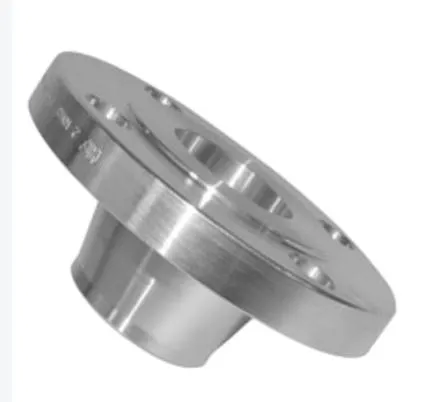-
Cangzhou Yulong Steel Co., Ltd.
-
Phone:
+86 13303177267 -
Email:
admin@ylsteelfittings.com
- English
- Arabic
- Italian
- Spanish
- Portuguese
- German
- kazakh
- Persian
- Greek
- French
- Russian
- Polish
- Thai
- Indonesian
- Vietnamese
- Zulu
- Korean
- Uzbek
- Hindi
- Serbian
- Malay
- Ukrainian
- Gujarati
- Haitian Creole
- hausa
- hawaiian
- Hebrew
- Miao
- Hungarian
- Icelandic
- igbo
- irish
- Japanese
- Javanese
- Kannada
- Khmer
- Rwandese
- Afrikaans
- Albanian
- Amharic
- Armenian
- Azerbaijani
- Basque
- Belarusian
- Bengali
- Bosnian
- Bulgarian
- Catalan
- Cebuano
- China
- China (Taiwan)
- Corsican
- Croatian
- Czech
- Danish
- Esperanto
- Estonian
- Finnish
- Frisian
- Galician
- Georgian
- Kurdish
- Kyrgyz
- Lao
- Latin
- Latvian
- Lithuanian
- Luxembourgish
- Macedonian
- Malgashi
- Malayalam
- Maltese
- Maori
- Marathi
- Mongolian
- Myanmar
- Nepali
- Norwegian
- Norwegian
- Occitan
- Pashto
- Dutch
- Punjabi
- Romanian
- Samoan
- Scottish Gaelic
- Sesotho
- Shona
- Sindhi
- Sinhala
- Slovak
- Slovenian
- Somali
- Sundanese
- Swahili
- Swedish
- Tagalog
- Tajik
- Tamil
- Tatar
- Telugu
- Turkish
- Turkmen
- Urdu
- Uighur
- Welsh
- Bantu
- Yiddish
- Yoruba

Sep . 09, 2024 14:58 Back to list
Comparing the JIS B2220 Flange and EN1092-1 Flange: Which One is Right for Your Project?
When it comes to piping systems, choosing the right flange is crucial for ensuring a secure and reliable connection. Two of the most widely used flanges in the industry are the JIS B2220 flange and the EN1092-1 flange. Each of these flanges is designed to meet specific international standards, making them suitable for different applications and industries. Let’s delve into the unique advantages, applications, and specifications of these two flanges to help you determine which one is best suited for your project.

Advantages and Applications of the JIS B2220 Flange
The JIS B2220 flange is manufactured according to Japanese Industrial Standards (JIS), which are recognized globally for their precision and reliability. This flange is widely used in industries across Asia, particularly in Japan, where JIS standards are the norm.
One of the primary advantages of the JIS B2220 flange is its compatibility with Asian-manufactured equipment and piping systems. This makes it an ideal choice for projects involving machinery or infrastructure developed according to JIS standards. Additionally, the JIS B2220 flange is known for its robust design and ability to withstand high-pressure environments, making it suitable for applications in oil and gas, petrochemical, and power generation industries.
In terms of JIS B2220 flange dimensions, these flanges are available in a variety of sizes to accommodate different pipe diameters and pressure ratings. Whether you need a flange for a small pipeline or a large industrial installation, the JIS B2220 flange offers the flexibility and reliability you need to ensure a secure connection.
Exploring the Benefits and Uses of the EN1092-1 Flange
The EN1092-1 flange is manufactured according to European standards, specifically the EN1092-1 standard, which is widely recognized across Europe and beyond. This flange is commonly used in European-manufactured piping systems and is designed to meet the rigorous requirements of industries such as chemical processing, water treatment, and HVAC.
One of the key advantages of the EN1092-1 flange is its versatility. This flange is available in a wide range of materials, including stainless steel, carbon steel, and alloy steel, allowing it to be used in various applications, from low-pressure water systems to high-pressure chemical pipelines. Additionally, the EN 1092-1 flange dimensions are standardized across Europe, ensuring compatibility with European equipment and piping systems.
The EN1092-1 flange is also known for its ease of installation and maintenance. Its design allows for quick and efficient assembly, reducing downtime and ensuring that your project stays on schedule. Furthermore, the EN1092-1 flange is designed to provide a leak-proof connection, even in challenging environments, making it a reliable choice for critical applications.
Making the Right Choice: JIS B2220 Flange vs. EN1092-1 Flange
When deciding between the JIS B2220 flange and the EN1092-1 flange, it’s important to consider the specific requirements of your project. If your project involves equipment or piping systems manufactured in Asia, particularly Japan, the JIS B2220 flange is likely the best choice due to its compatibility and robust design. On the other hand, if your project is based in Europe or involves European standards, the EN1092-1 flange offers the versatility and ease of use that you need.
Both flanges offer high-quality, reliable connections, but their suitability will depend on the standards and requirements of your specific project. By choosing the right flange, you can ensure a secure, durable, and leak-proof connection that meets the demands of your industry.
Latest news
-
ANSI 150P SS304 SO FLANGE
NewsFeb.14,2025
-
ASTM A333GR6 STEEL PIPE
NewsJan.20,2025
-
ANSI B16.5 WELDING NECK FLANGE
NewsJan.15,2026
-
ANSI B16.5 SLIP-ON FLANGE
NewsApr.19,2024
-
SABS 1123 FLANGE
NewsJan.15,2025
-
DIN86044 PLATE FLANGE
NewsApr.19,2024
-
DIN2527 BLIND FLANGE
NewsApr.12,2024
-
JIS B2311 Butt-Welding Fittings LR/SR 45°/90° /180°Seamless/Weld
NewsApr.23,2024











